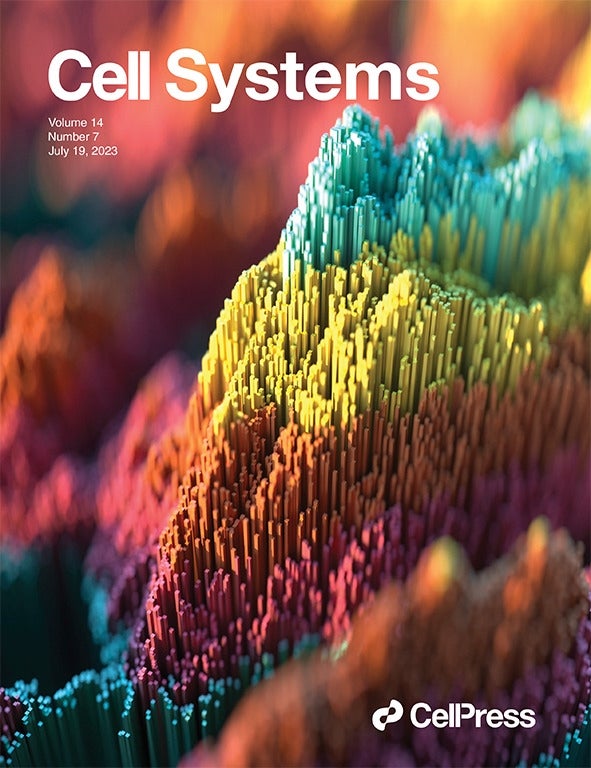
First map of a cellular stress memory landscape paves the way for better understanding of cell stress-related disease processes
When does that seasonal suntan become a risk for melanoma? At what point could those extra pounds trigger diabetes? Could severe head injuries tip one over into Alzheimer’s disease? In the larger scheme of things, the risk factors include genetics, lifestyle and age, with the answers often only coming after the unfortunate diagnoses.
However, a record of the physical slights, injuries, bad choices we make and abuses we experience exists as stress at a cellular level. UC Santa Barbara researchers have found a way to map this cellular “stress memory landscape,” which interprets the stresses that cells have already undergone and predicts the cells’ future reaction to stressors.
“We’ve developed a platform that could allow us to eventually figure out how all stress-related diseases occur,” said molecular biologist Max Wilson, a senior author of a paper that appears on the cover the journal Cell Systems. In addition to demystifying the onset of cellular stress-related diseases, being able to map out this landscape could also lead to measures that could prevent or decrease the likelihood of those conditions, as well as generate more effective, innovative therapies.
What Doesn’t Kill You (Usually) Makes You Stronger
When the cells of your body experience stress, they mount a response aimed at getting things back into balance. This complex signaling pathway, called the integrated stress response (ISR), can be triggered from both inside and outside the cell, by stressors such as trauma, exposure to toxins, or pathological conditions.
“Stress will elicit a response that will either help the cells to adapt, or kill them, if the damage is too great,” Wilson said. In cases where the stress is low-level and relatively infrequent, the response tends to be transient. In situations where the stress is constant or perhaps severe enough, the responses could lead to chronic diseases, such as diabetes, neurodegeneration or cancer.

Embedded in the way the ISR works is a record of cellular stresses and responses to these stresses, which the researchers explored by generating “virtual stress,” that is, activating the ISR to generate a response without actually causing damage to the cell. By shining light on light-responsive proteins in their platform, the researchers triggered this ancient, evolutionarily conserved signaling pathway, shared by all eukaryotes (organisms whose cells have nuclei), allowing them to “hack into human stress signaling networks,” Wilson said.
Unlike other ISR-inducing agents such as chemicals and physical stimuli, light creates a clear pathway for the observation of stress-induced responses.
“It can be complicated to determine the response from pure stress because the response can be conflated with the damage caused by the stress-inducing poison, or trauma,” he explained.
Other cascading failures caused by the toxins or physical damage, as well as cellular repair processes, can cloud observations of how the ISR decides which genes to activate in response to the stress it experiences. The researchers’ optogenetic method also allows for fine control over the intensity, duration and frequency of the virtual stress. According to their study, “the difference between an adaptive and a maladaptive stress response is commonly defined by the differences in dosage and timing of a stress input.” And they found that the combination of past stress and recovery time after the stress constitutes the cellular stress memory.
This ability to manipulate the integrated stress response in a highly controlled manner and to varying degrees opens a window into various cellular stress-related conditions associated with the ISR. Aging affects these response signals, which could trigger diseases that occur later in life, including adult-onset diabetes or neurodegenerative conditions such as Huntington’s disease. Cancers might also be the result of faulty translation of healthy signals into oncogenic ones that result in unchecked tumor growth. It may also become possible to manipulate cellular stress memories in neurodegenerative diseases caused by the failure to forget or remember past cellular stresses, such as with ALS and vanishing white matter disease.
Research on this project was also conducted by Taivan Batjargal, Francesca Zappa, Ryan J. Grant, Robert A. Piscopio, Alex Chialastri, Siddharth S. Dey and Diego Acosta-Alvear, all at UCSB.
Sonia Fernandez
Senior Science Writer
(805) 893-4765
sonia.fernandez@ucsb.edu




